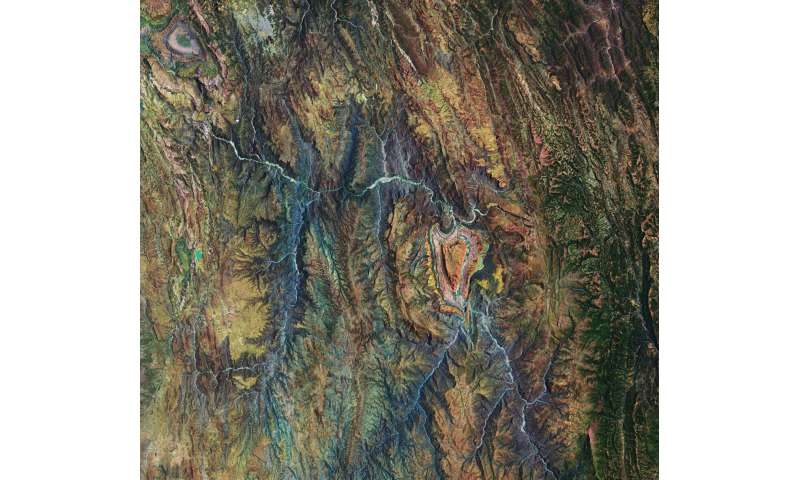Image: Bolivian highland heart
by Science X staff
For Valentine's Day, we bring you this Copernicus Sentinel-2 image capturing a beautiful heart-shaped geographical formation in the dramatic landscape of the southern highlands of Bolivia.
The highlands are part of the Altiplano, meaning High Plateau, a region that stretches almost 1000 km from Peru to Bolivia. The landscape consists of a series of basins lying about 3500 m above sea level and is the most extensive area of high plateau on Earth, outside Tibet.
This particular area featured here is a transition between the desert in the west and the tropical forest in the east. The heart-shaped formation has been molded by many layers of different geological formations over time. The many streams and rivers visible in this image have also contributed to the shaping of the landscape as we see it today.
This false-color composite image was processed by selecting spectral bands that can be used for classifying geological features—but here the image processing also highlights this lovely heart for today's image.
Sucre, the capital of the Chuquisaca Department, is visible at the top of the image in gray. Designated a UNESCO World Heritage Site, the city lies at an elevation of around 2800 meters above sea level. To the left of Sucre, the Maragua crater can be seen—a popular hiking destination.
Satellites, such as Copernicus Sentinel-2, allow us to capture beautiful images such as these from space, but also to monitor changing places on Earth. Flying 800 km above, satellites take the pulse of our planet by systematically imaging and measuring changes taking place, which is particularly important in regions that are otherwise difficult to access. This allows for informed decisions to be made to help protect our world for future generations and for all citizens that inhabit our beloved Earth.
We send all our love for Valentine's Day from the high plateaus of Bolivia—and hope we continue our celebration of love for Earth every day of the year.
Provided by European Space Agency